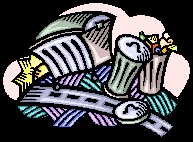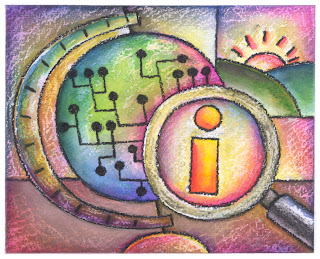We are in week 11 of our new start up business. About 6
weeks ago I mentioned we did not yet have a name for the company. We still
don’t. Our focus has been on product. But not building a product, not even
designing one: we still need to discover one.
The process of discovery has lots of pundits explaining the
best way to innovate. Some say it is a structured process of trial and error,
some say it comes from brainstorming, others believe it comes from finding your
passion and convincing the world to appreciate it as you do, and most believe
it is a matter of finding a problem that needs solved better than anyone else
solves it. I read once (I can no longer recall who said it) that the best way
to come up with a great idea is to get a group of people you really like to
work with, figure out what you really like to do, then build it. This thinking
suggests that a business built around doing what you enjoy with the people you
work well with is bound to be successful, regardless of the idea. Maybe.
In my experience of creating a handful of fairly successful
products over the years, I find that the process is never the same. When I
worked in large companies, new products tended arise from the crucible of need.
Large companies have money, resources, and market power; what they don’t have
is focus. Big companies rarely do anything unless the need is so great they are
forced to do it. At smaller companies we tended to have product strategies that
focused nicely around processes to continuously enhance (I almost said continuously
improve – but evidence tends to suggest improvement is not always part of the
game – even if it is always part of the aim). When I have been involved in startups
we tended to act like idea-mills where everyone throws stuff at the wall to see
what will stick. Passion often determines the winner.
For me one constant in the process of innovation – whether
large, small or startup – is structured chaos. You have to break the mold of
old thinking and allow ideas to be generated. But if you don’t wrap some
structure around it you lose a lot of the momentum. Ideas flow like water: if
there are no boundaries they tend to dissipate quickly. I approach product
innovation almost like a hashing algorithm. The two extremes are (1) unfettered
idea generation on one end and (2) focused problem analysis on the other. You
keep working the process from both ends until you begin to gel on something in
the middle. The best ideas solve a problem worth solving but see the problem in
a whole new light. It is no longer about building a better mouse trap – but
instead building a better mouse.
Going back to my earlier idea about great products coming
from working with people you like and working on what it is you really like to
do. I am thinking that if I got my best buddies together I am afraid we’d spend
all our time hiking in the mountains. I’ll have to think about what product
that might be. Maybe I could invent HikeBuddies.com.





